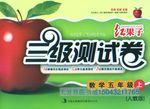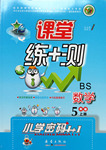题目内容
6.What colour is it today?What shape is that smell?What does that pain sound like?These questions might seem like nonsense,but four people in 100might think they make perfect sense.That four percent have synesthesia,and they naturally experience certain senses together.One form of this is pairing numbers or letters with a fixed colour-a blue"1"or a red"D."Other synesthetes,people with synesthesia,may think the word"hurricane"tastes salty.Yet others with"mirror-touch synesthesia"see someone hit on the head and also feel the hit themselves.Synesthesia is not completely understood though it is in our genes.The white matter (脑白质) of synesthetes is organized differently from that of people without synesthesia,which may account for the differences in perception (感知).Synesthesia is widely accepted and researched today,but that hasn't always been true.Though it caught scientific interest in the late 1800s,it was later rejected as a self-created way of thinking.But as people have become more fascinated by the differences in individual perception,a focus on synesthesia has been renewed.At the present time,scientists in various fields are examining the phenomenon.
As scientists continue to study synesthesia,certain advantages have been noticed.Studies show that the sensation connections that synesthetes experience aid them in abilities related to memory.Researchers believe that this advantage may help stop the loss of cognitive (认知) function in the elderly.This aspect of synesthesia could even help patients recover from brain injuries.Synesthetes also tend to be artists,singers Pharrell Williams and Lady Gaga being some famous examples.Most likely,synesthesia doesn't give artistic sensitivity,but it's understandable that seeing colours in music,for instance,could inspire art.
Strong drugs and increasing blindness have been known to cause synesthesia,but these are not good options for obvious reasons.One recent emphasis of the study of synesthesia is to determine whether non-synesthetes can acquire it.For now,the University of East London is training adults to establish letter-colour connections for memory improvement to some effect.It may not be long before words taste like our favourite foods and our favourite songs look like fireworks.
(Note:Answer the questions or complete the statements in NO MORE THAN EIGHT WORDS.)
78.According to the passage synesthetes are thosewho naturally experience certain senses together/(who are) with synesthesia.
79.Why do synesthetes have sensation connections while the others don't?Because their brain/white matter is organized differently.
80.What groups of people might profit from synesthesia according to the third paragraph?The elderly,patients with brain injures and artists.
81.Scientists are training adults to establish letter-colour connections to prove the possibility thatnon-synesthetes can acquire synesthesia/synesthesia can be acquired.
分析 本文主要讲述了科学家对synesthesia"通感病"的研究,关于它的成因以及给病人带来的影响.
解答 78.who naturally experience certain senses together/(who are) with synesthesia 细节概括题.第一段介绍了"通感病"的定义,That four percent have synesthesia,and they naturally experience certain senses together这句话描述了‘通感病的人共性---即共同体验不能感觉.故答案为who naturally experience certain sense together
79.Because their brain/white matter is organized differently. 细节理解题.The white matter (脑白质) of synesthetes is organized differently from that of people without synesthesia,which may account for the differences in perception (感知).在第二段第二句话,告诉我们通感病患者就是同时体验多种感官的人.
80.The elderly,patients with brain injures and artists.细节理解题. 第三段主要讲述了"通感病"的优势.由第三段第三、四、五句可知,老人、脑部受伤者和艺术家可以从该症状中获益.故答案为The elderly,patients with brain injures and artists.
81.non-synesthetes can acquire synesthesia/synesthesia can be acquired.细节概括题.由第四段第二句可知,研究人员训练人们获得字母颜色联系的能力是为了了解正常人能否获得共感能力,故答案为non-synesthetes can acquire synesthesia
点评 本文是说明类的阅读表达,要求学生在阅读理解的基础上,根据短文后的题目,在文中找到相关的内容,并用简洁、准确的句子,将理解的内容,书面表达出来.做题时,注意表达的内容不要超出规定的字数.

 红果子三级测试卷系列答案
红果子三级测试卷系列答案 课堂练加测系列答案
课堂练加测系列答案 轻松课堂单元测试AB卷系列答案
轻松课堂单元测试AB卷系列答案| A. | depend on | B. | concentrate on | C. | base on | D. | take on |
| A. | produces | B. | Makes | C. | Remains | D. | gets |
-In fact,I don't want to her with my problems all the time.( )
| A. | honour | B. | help | C. | affect | D. | bother |
| A. | amusing | B. | adopting | C. | abusing | D. | amazing |